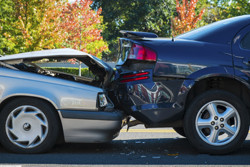Cutting-edge technology for cars to detect pedestrians
Although casualties have dramatically decreased over the last few years due to a variety of new technologies, the percentage is not quite big enough. The European Commission has set ambitious road safety goals for the 2010-2020 timeframe for reducing casualties by 50 %. With this in mind, the EU-funded ARTRAC (Advanced radar tracking and classification for enhanced road safety) project sought to develop, test and demonstrate an active safety system for vehicles that senses vulnerable road users (VRUs). Project partners began by analysing accident statistics, past projects and existing sensor technology. Based on this, the requirements for the development of the radar sensor and the VRU safety system were specified. They developed the sensor hardware and algorithms and the on-board system interfaces and software. The sensor was then integrated into the test vehicles. An in-depth testing and evaluation programme for all system parts was specified and performed. A cost-effective 24 GHz automotive radar sensor equipped with a new transmit/receive antenna was designed. The multipurpose radar hardware is divided into two subsystems: a road condition sensor and a VRU sensor. It was successfully tested on two vehicles belonging to the compact range that pose the most risk to VRUs in cities. The system performs various functions such as automatic braking or system-initiated steering to prevent accidents. By recognising and classifying objects such as pedestrians, bicyclists, vehicles and even static objects, the innovative ARTRAC safety system will offer an increased level of safety for VRUs.
Keywords
Road safety, 24 GHz radar system, antenna array, object classification, radar tracking, vehicles, vulnerable road users, automatic breaking, automatic steering, road condition sensor







